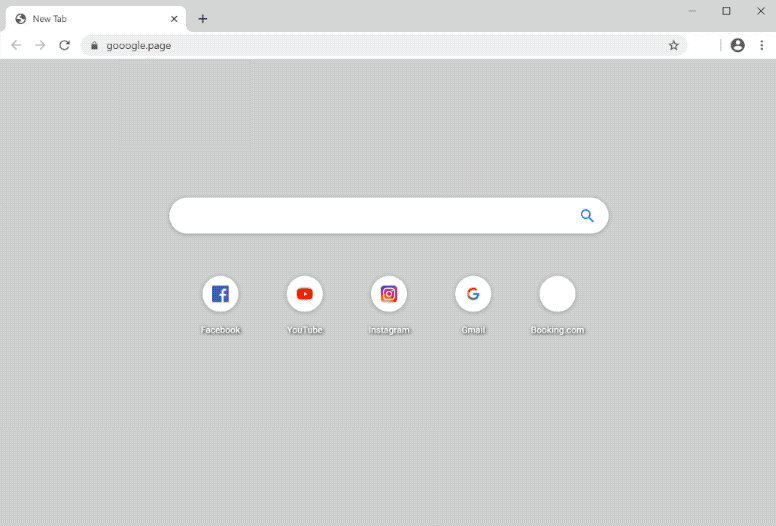gooogle.page is a deceptive website pushed by a browser hijacker. If the site is suddenly loading every time you open your browser, your computer likely has a browser hijacker installed on it. It’s a relatively minor infection that makes unwanted changes to the browser’s settings but does not directly harm computers. But the infection can also redirect you to potentially dangerous websites. So if you notice it installed on your computer, the sooner you remove gooogle.page browser hijacker from your computer, the better.
It’s immediately noticeable when a browser hijacker installs on a computer. Mainly because your browser settings are unexpectedly changed. In the case of this hijacker, it will set gooogle.page as your homepage/new tabs, as well as set a different search engine. The changes are made without your explicit permission so you were likely taken by surprise. The hijacker can also make the changes to all popular browsers, including Google Chrome, Mozilla Firefox, and Safari. It’s also worth mentioning that the changes are not reversible while the hijacker is installed on a computer.
The gooogle.page site that the hijacker is promoting is clearly trying to pass as Google. This is done to trick users into using the site. The whole point of browser hijackers is to expose users to sponsored content by inserting it into search results. And the search engine pushed by gooogle.page will do exactly that. If you use it, you will be shown a lot of ads in your search results, and they usually have nothing to do with what you were searching for.
It’s also worth mentioning that some results could lead you to dangerous sites that promote scams or hide malware. So while browser hijackers aren’t dangerous infections that harm computers, they’re not entirely harmless. To avoid being exposed to potentially dangerous content, remove gooogle.page browser hijacker as soon as you notice it installed.
Infections like browser hijackers and adware also collect information about users’ browsing activities. To be more specific, they collect what sites you visit, what you search for, what content you interact with, your IP address, etc. While the information isn’t exactly sensitive, there’s really no reason to put up with any kind of data collection from a questionable program like a browser hijacker. Especially because the information would also be shared with other parties as well.
Browser hijackers use a technique known as software bundling to install, which we will explain in more detail in the following section. But to put it shortly, the hijacker was most likely attached to a free program you installed, and it was authorized to install alongside without your permission. Because of deceptive installation methods like this, it’s important to have good installation habits. Otherwise, your computer will be filled with various junk programs that can be difficult to get rid of once fully installed.
To summarise, gooogle.page browser hijacker installed without your explicit permission, made unwanted changes to your browser’s settings, pushes a questionable search engine that modifies search results, collects data about your browsing activities, and can potentially expose you to dangerous content. It has no useful features and will only disrupt your browsing. The sooner you delete gooogle.page from your computer, the better.
How did a browser hijacker install on your computer?
It’s possible that the hijacker was disguised as some kind of browser extension that could somehow improve the browsing experience. You can often encounter this kind of false advertising on third-party download sites. This is why you should always research programs/extensions before installing them. Even a search with Google is usually enough.
If you don’t remember installing anything recently, gooogle.page browser hijacker could have been installed via the software bundling method. This is a method often used by adware, browser hijackers, and potentially unwanted programs to install because it essentially allows them to bypass users and install without explicit permission.
The way software bundling works is additional offers (adware, browser hijackers, etc.) are added to programs in a way that allows them to install alongside automatically. Furthermore, the offers are hidden initially. Technically, the offers are optional but they need to be manually deselected to prevent their installations. But since the offers are hidden, users are often unable to do that. Considering that software bundling is quite deceptive, it’s no wonder that anti-virus programs detect programs that use it as potential threats.
You won’t have any problems preventing these unauthorized installations if you install free software correctly. To do that, you need to use Advanced (Custom) settings as opposed to Default when installing freeware. The installation window might recommend using Default, but if you do, all added offers will be authorized to install automatically along with the program. On the other hand, Advanced settings will make all offers visible. Additionally, you will have the option to deselect each one. Even if some of the offers appear to be useful at first glance, we always advise declining all of them. We’ve already mentioned that software bundling is a deceptive installation technique. And programs that use it to install have no place on your computer unless you want to fill your device with junk. Infections like adware and browser hijackers can be troublesome to get rid of so it’s much easier to just uncheck a few boxes during installation.
gooogle.page browser hijacker removal
Browser hijackers aren’t serious infections so you can remove gooogle.page both manually and using anti-virus software. The latter is recommended for users who do not have a lot of experience with uninstalling programs. Browser hijackers can be pretty persistent so it’s easier and quicker to use anti-virus software. However, if you want to uninstall gooogle.page browser hijacker yourself manually, you can use the directions provided below to help you.
Offers
Download Removal Toolto scan for gooogle.pageUse our recommended removal tool to scan for gooogle.page. Trial version of provides detection of computer threats like gooogle.page and assists in its removal for FREE. You can delete detected registry entries, files and processes yourself or purchase a full version.
More information about SpyWarrior and Uninstall Instructions. Please review SpyWarrior EULA and Privacy Policy. SpyWarrior scanner is free. If it detects a malware, purchase its full version to remove it.

WiperSoft Review Details WiperSoft (www.wipersoft.com) is a security tool that provides real-time security from potential threats. Nowadays, many users tend to download free software from the Intern ...
Download|more


Is MacKeeper a virus? MacKeeper is not a virus, nor is it a scam. While there are various opinions about the program on the Internet, a lot of the people who so notoriously hate the program have neve ...
Download|more


While the creators of MalwareBytes anti-malware have not been in this business for long time, they make up for it with their enthusiastic approach. Statistic from such websites like CNET shows that th ...
Download|more
Quick Menu
Step 1. Uninstall gooogle.page and related programs.
Remove gooogle.page from Windows 8
Right-click in the lower left corner of the screen. Once Quick Access Menu shows up, select Control Panel choose Programs and Features and select to Uninstall a software.
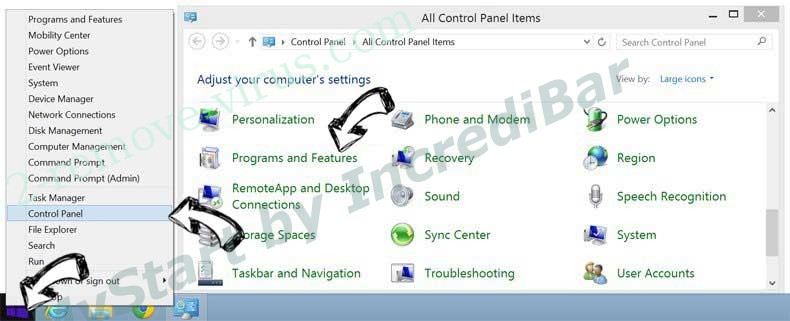

Uninstall gooogle.page from Windows 7
Click Start → Control Panel → Programs and Features → Uninstall a program.
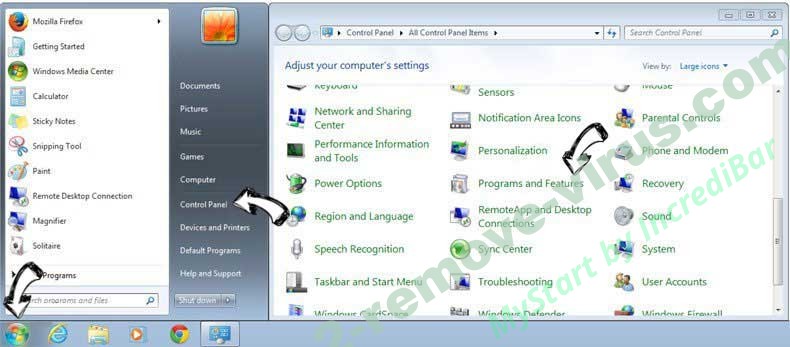

Delete gooogle.page from Windows XP
Click Start → Settings → Control Panel. Locate and click → Add or Remove Programs.
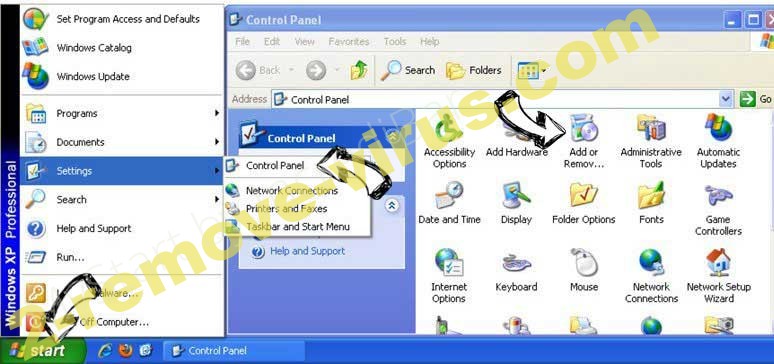

Remove gooogle.page from Mac OS X
Click Go button at the top left of the screen and select Applications. Select applications folder and look for gooogle.page or any other suspicious software. Now right click on every of such entries and select Move to Trash, then right click the Trash icon and select Empty Trash.
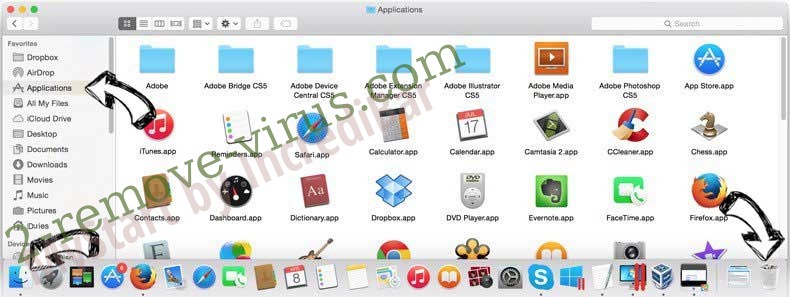

Step 2. Delete gooogle.page from your browsers
Terminate the unwanted extensions from Internet Explorer
- Tap the Gear icon and go to Manage Add-ons.

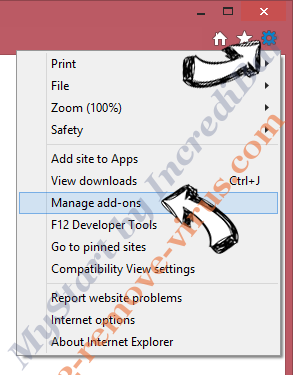
- Pick Toolbars and Extensions and eliminate all suspicious entries (other than Microsoft, Yahoo, Google, Oracle or Adobe)

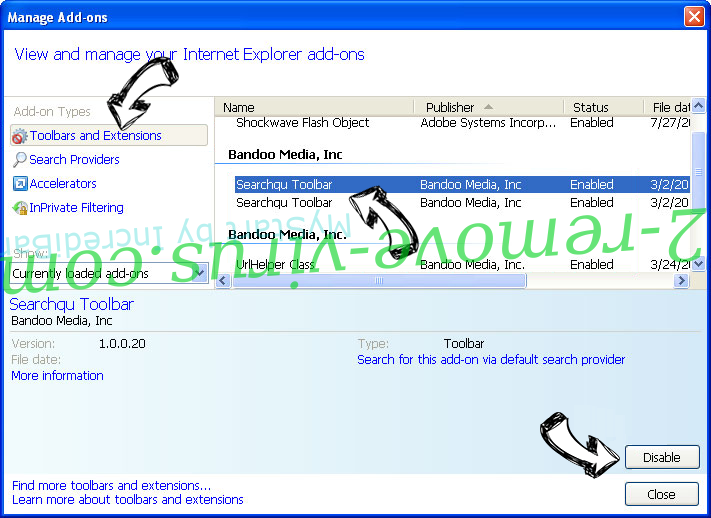
- Leave the window.
Change Internet Explorer homepage if it was changed by virus:
- Tap the gear icon (menu) on the top right corner of your browser and click Internet Options.

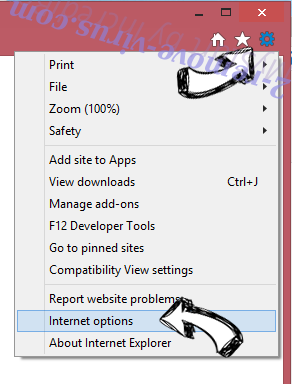
- In General Tab remove malicious URL and enter preferable domain name. Press Apply to save changes.

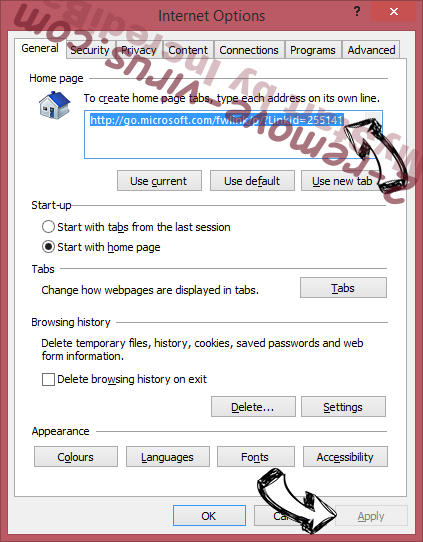
Reset your browser
- Click the Gear icon and move to Internet Options.

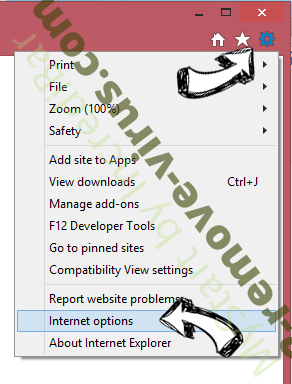
- Open the Advanced tab and press Reset.

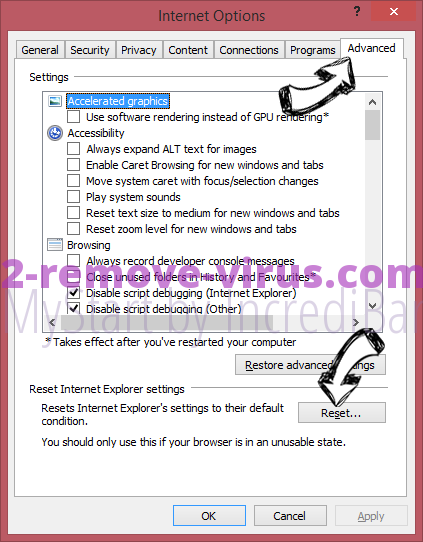
- Choose Delete personal settings and pick Reset one more time.

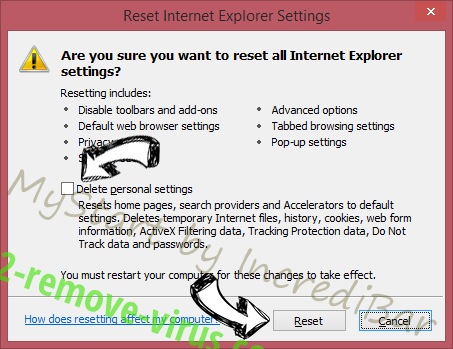
- Tap Close and leave your browser.

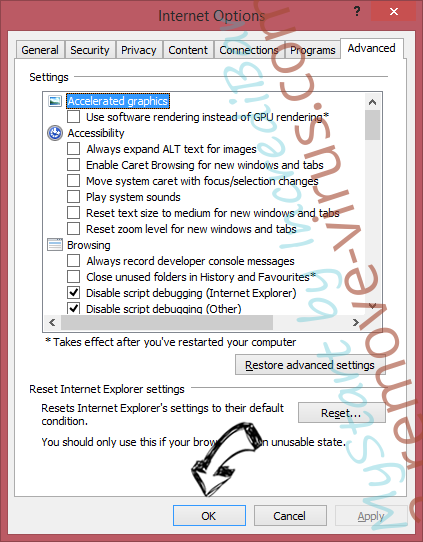
- If you were unable to reset your browsers, employ a reputable anti-malware and scan your entire computer with it.
Erase gooogle.page from Google Chrome
- Access menu (top right corner of the window) and pick Settings.

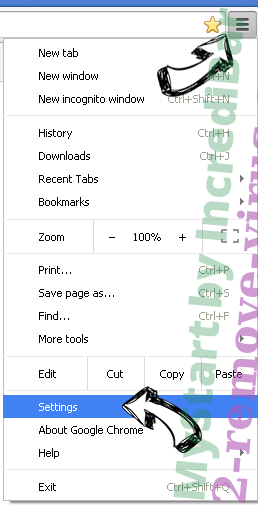
- Choose Extensions.

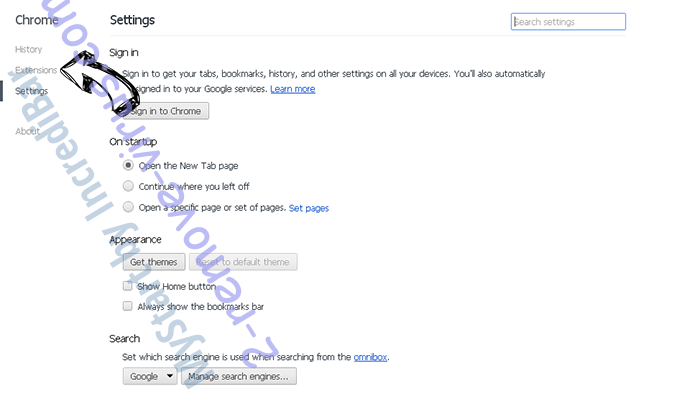
- Eliminate the suspicious extensions from the list by clicking the Trash bin next to them.

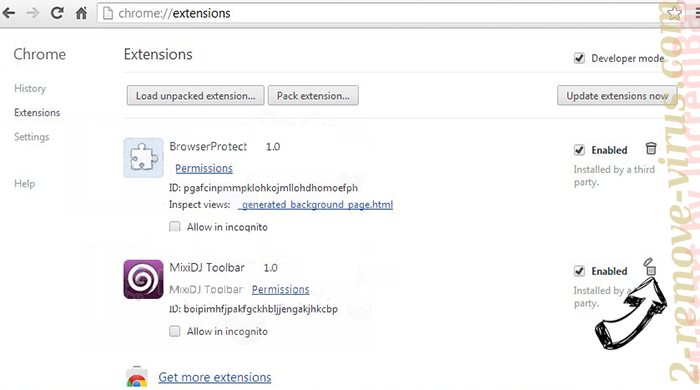
- If you are unsure which extensions to remove, you can disable them temporarily.

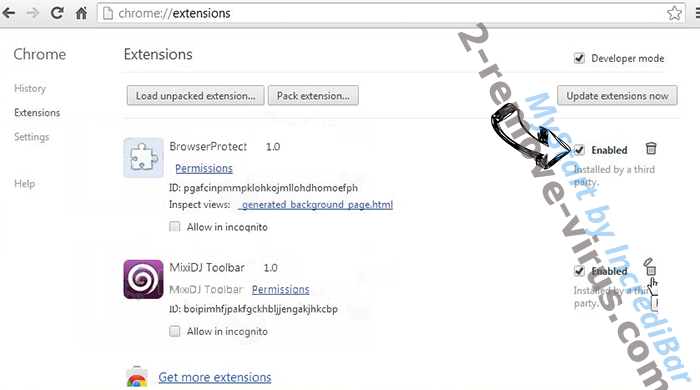
Reset Google Chrome homepage and default search engine if it was hijacker by virus
- Press on menu icon and click Settings.

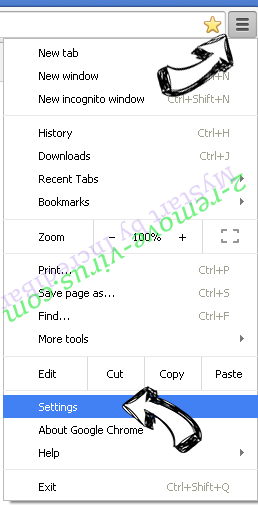
- Look for the “Open a specific page” or “Set Pages” under “On start up” option and click on Set pages.

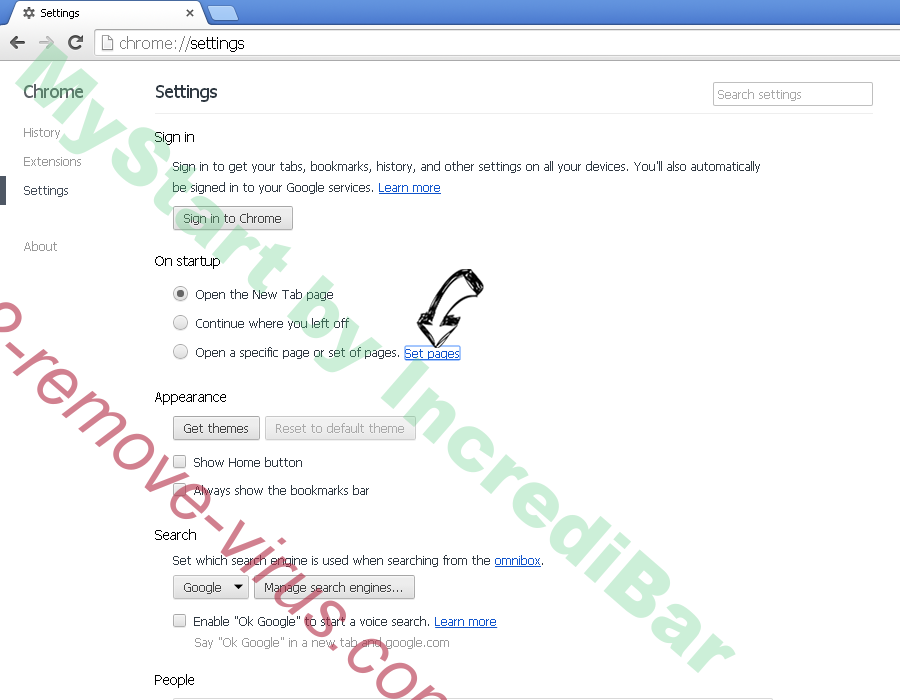
- In another window remove malicious search sites and enter the one that you want to use as your homepage.

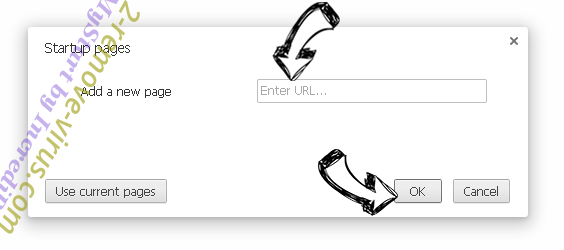
- Under the Search section choose Manage Search engines. When in Search Engines..., remove malicious search websites. You should leave only Google or your preferred search name.

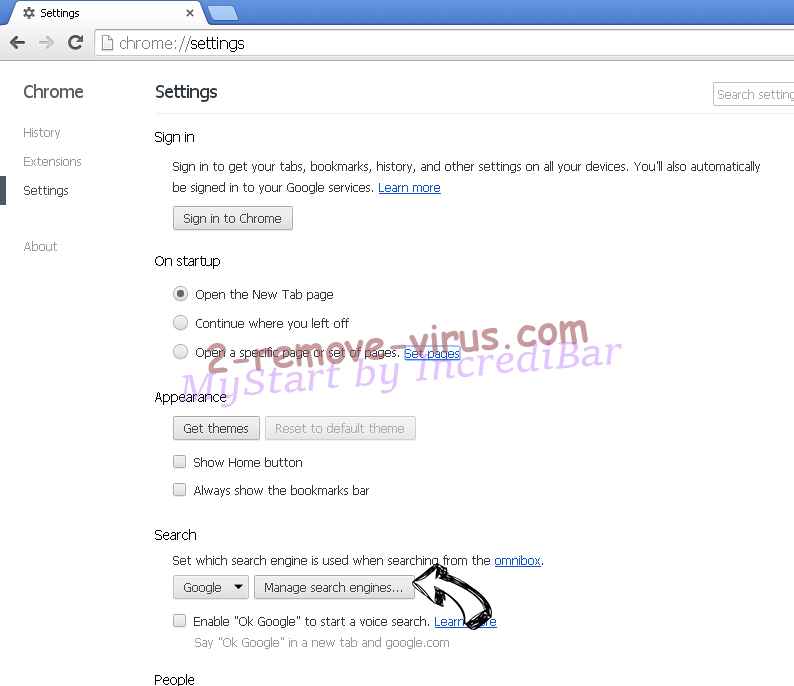

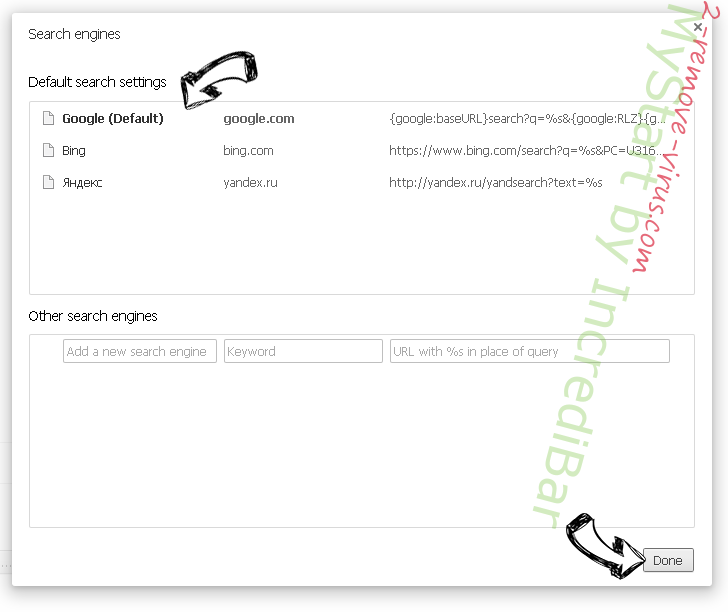
Reset your browser
- If the browser still does not work the way you prefer, you can reset its settings.
- Open menu and navigate to Settings.

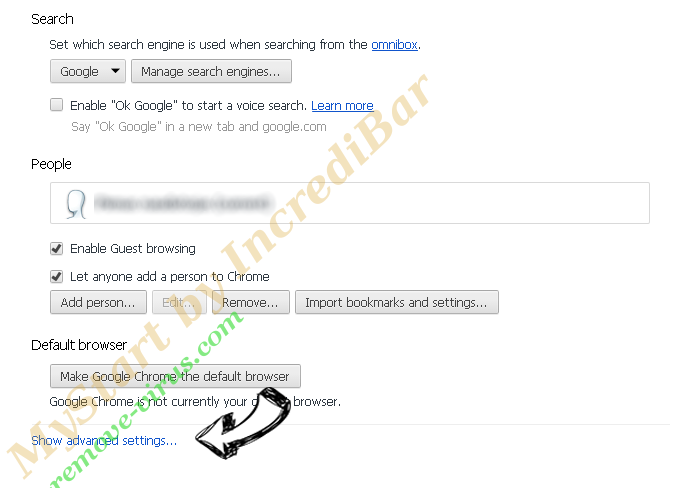
- Press Reset button at the end of the page.

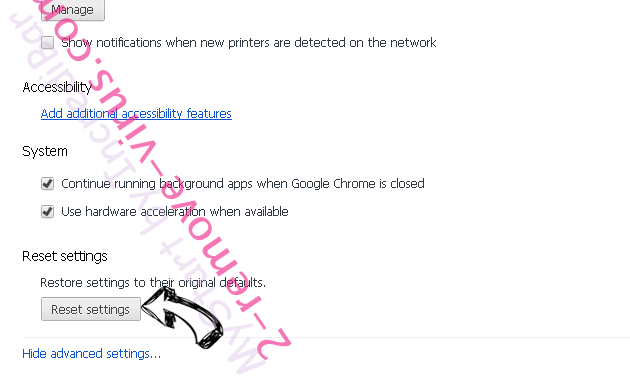
- Tap Reset button one more time in the confirmation box.

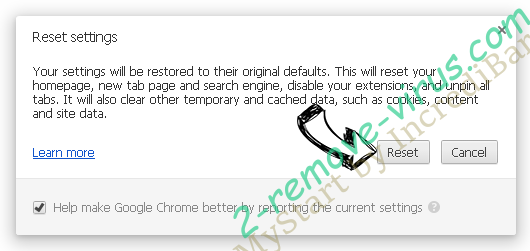
- If you cannot reset the settings, purchase a legitimate anti-malware and scan your PC.
Remove gooogle.page from Mozilla Firefox
- In the top right corner of the screen, press menu and choose Add-ons (or tap Ctrl+Shift+A simultaneously).

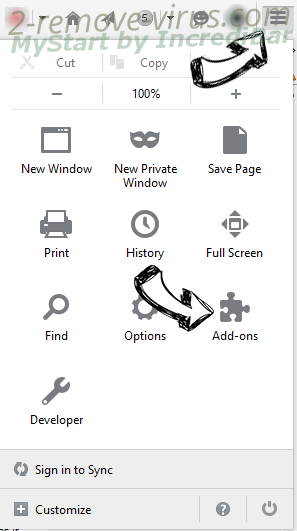
- Move to Extensions and Add-ons list and uninstall all suspicious and unknown entries.

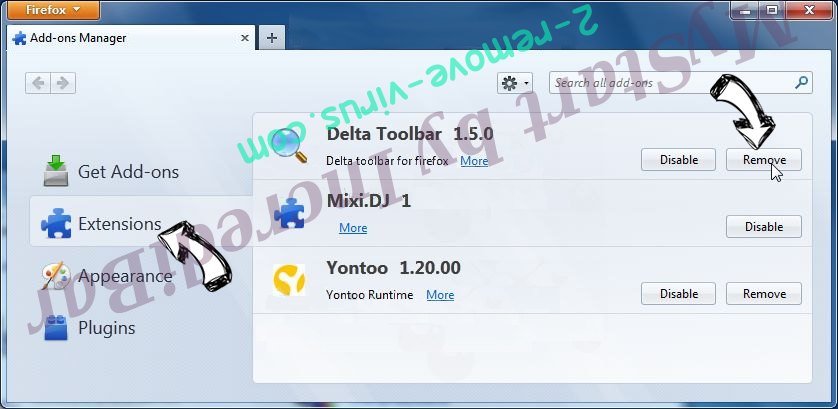
Change Mozilla Firefox homepage if it was changed by virus:
- Tap on the menu (top right corner), choose Options.

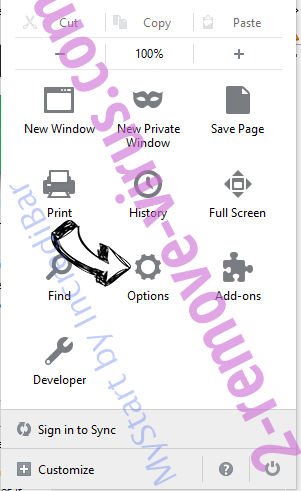
- On General tab delete malicious URL and enter preferable website or click Restore to default.

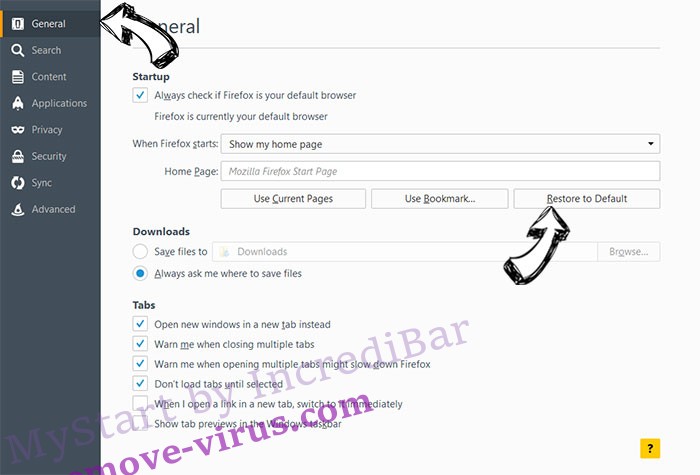
- Press OK to save these changes.
Reset your browser
- Open the menu and tap Help button.

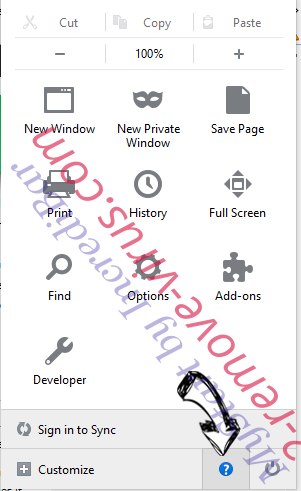
- Select Troubleshooting Information.

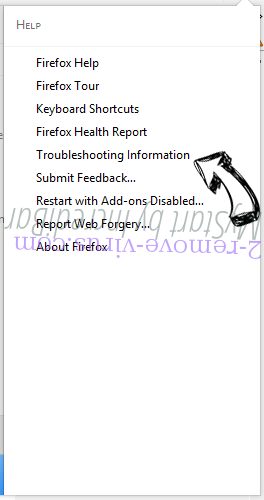
- Press Refresh Firefox.

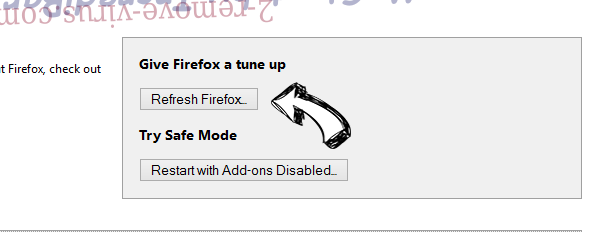
- In the confirmation box, click Refresh Firefox once more.

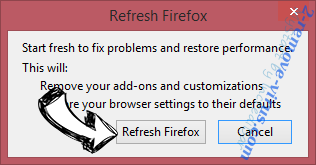
- If you are unable to reset Mozilla Firefox, scan your entire computer with a trustworthy anti-malware.
Uninstall gooogle.page from Safari (Mac OS X)
- Access the menu.
- Pick Preferences.

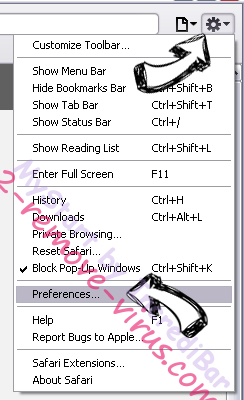
- Go to the Extensions Tab.

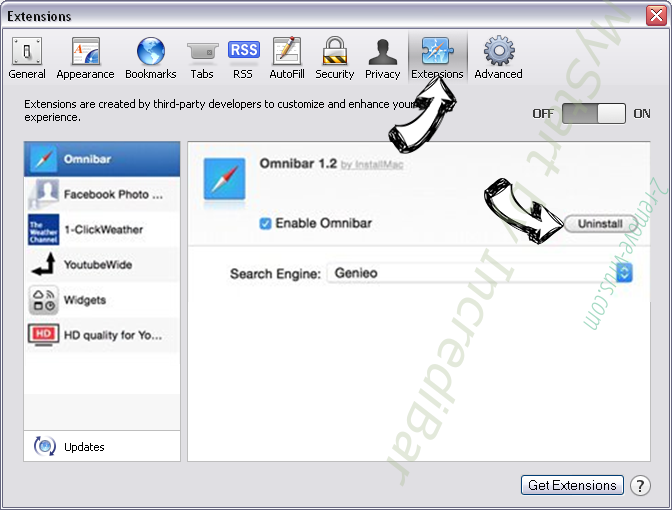
- Tap the Uninstall button next to the undesirable gooogle.page and get rid of all the other unknown entries as well. If you are unsure whether the extension is reliable or not, simply uncheck the Enable box in order to disable it temporarily.
- Restart Safari.
Reset your browser
- Tap the menu icon and choose Reset Safari.

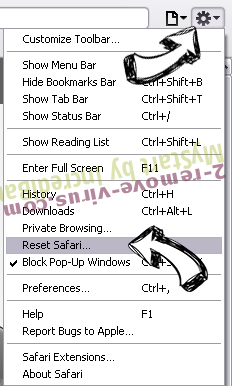
- Pick the options which you want to reset (often all of them are preselected) and press Reset.

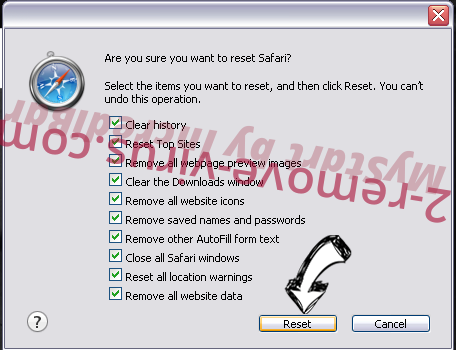
- If you cannot reset the browser, scan your whole PC with an authentic malware removal software.
Site Disclaimer
2-remove-virus.com is not sponsored, owned, affiliated, or linked to malware developers or distributors that are referenced in this article. The article does not promote or endorse any type of malware. We aim at providing useful information that will help computer users to detect and eliminate the unwanted malicious programs from their computers. This can be done manually by following the instructions presented in the article or automatically by implementing the suggested anti-malware tools.
The article is only meant to be used for educational purposes. If you follow the instructions given in the article, you agree to be contracted by the disclaimer. We do not guarantee that the artcile will present you with a solution that removes the malign threats completely. Malware changes constantly, which is why, in some cases, it may be difficult to clean the computer fully by using only the manual removal instructions.
